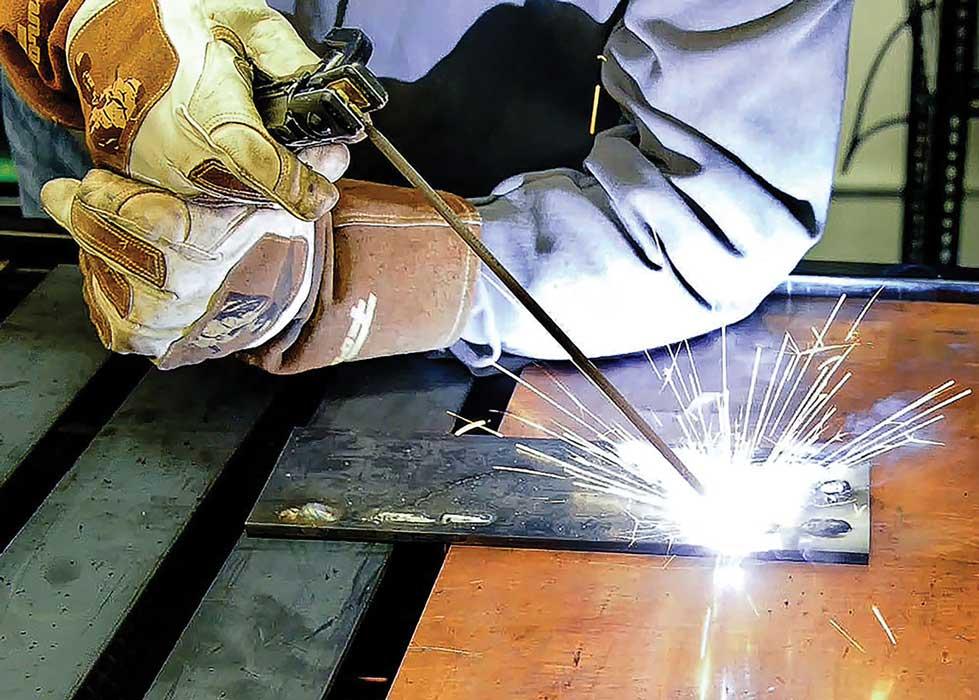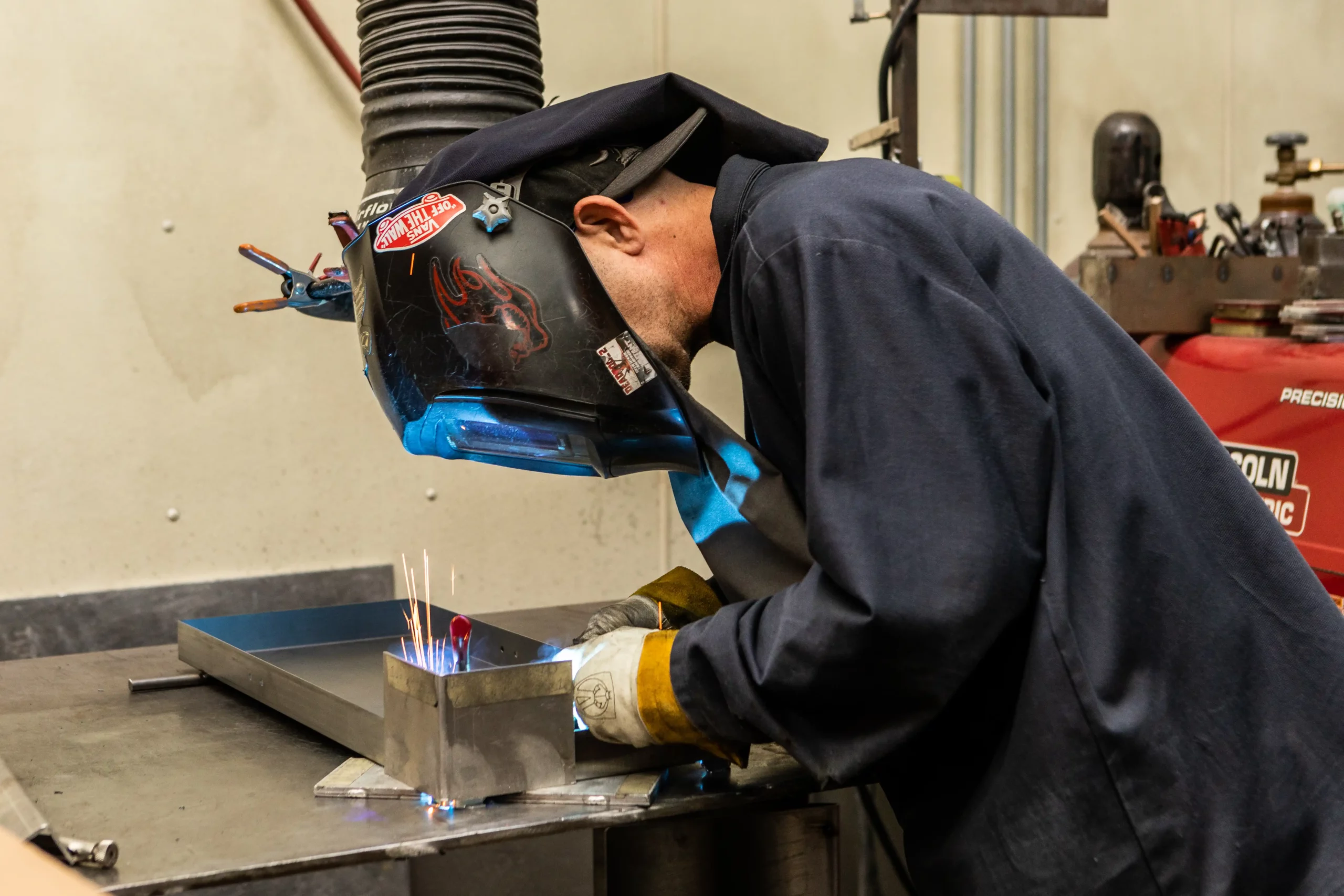Welding WPS: Usual Blunders to Prevent and Exactly How to Correct Them
Welding WPS: Usual Blunders to Prevent and Exactly How to Correct Them
Blog Article
Achieving Welding Quality: Introducing the Secrets of WPS Execution and Optimization
In the world of welding, achieving quality is a quest that hinges on the meticulous execution and optimization of Welding Treatment Specs (WPS) By delving right into the vital elements, methods, obstacles, and finest techniques associated with WPS, a globe of welding excellence awaits those who are eager to discover its depths.
Relevance of WPS in Welding
The Importance of Welding Treatment Specs (WPS) in the welding market can not be overstated, serving as the backbone for ensuring uniformity, quality, and safety and security in welding operations. A WPS offers in-depth guidelines on just how welding is to be accomplished, including vital variables such as materials, welding procedures, joint layout, filler steels, interpass and preheat temperatures, welding currents, voltages, traveling rates, and a lot more. By adhering to a distinct WPS, welders can maintain harmony in their work, leading to consistent weld quality throughout various jobs.

Crucial Element of WPS
Discussing the indispensable elements of a welding treatment requirements (WPS) is vital for comprehending its role in welding operations. An extensive WPS includes several essential aspects that guide welders in achieving top quality and uniformity in their job. One crucial element of a WPS is the welding process requirements, which lays out the details welding processes to be used, such as gas tungsten arc welding (GTAW) or protected metal arc welding (SMAW) Furthermore, the WPS includes information on the welding materials, such as the kind and specifications of the base metal and filler steel to be utilized. The WPS also specifies necessary variables like welding specifications, preheat and interpass temperature needs, and post-weld warm therapy procedures. In addition, it includes details on joint style, fit-up, and any kind of special strategies or precautions needed for the welding operation. By incorporating these crucial elements into the WPS, welding procedures can be standardized, ensuring quality, effectiveness, and safety in welding procedures.
Strategies for WPS Optimization
:max_bytes(150000):strip_icc()/MIG20welding20arc20in20action-2000-e8844d72f5094d408b5ab6f1c9436a4f.jpg)
Secondly, training and qualification of welding employees according to the details demands of the WPS is vital. Offering comprehensive training programs and ensuring that welders are accredited to implement treatments described in the WPS can cause greater quality welds and reduced rework.
Furthermore, leveraging modern technology such as welding software program and tracking systems can assist in enhancing WPS. These tools can aid in monitoring variables, making certain specifications are within defined limits, and offering real-time feedback to welders, allowing them to make instant modifications for enhanced weld top quality.
Common Difficulties and Solutions
Facing barriers in executing the methods for WPS optimization can impede welding procedures' performance and quality. One typical difficulty is poor training or understanding of the welding procedure link specifications (WPS) amongst the welding team.
An additional challenge is the lack of appropriate documentation and record-keeping, which is essential for WPS optimization. Without clear records of welding parameters, products made use of, and examination results, it becomes difficult to identify areas for renovation and ensure consistency in welding processes. Carrying out a robust documentation system, such as digital welding management software application, can help enhance record-keeping and assist in data analysis for constant enhancement.
Furthermore, inconsistent welding tools calibration and upkeep can present a significant difficulty to WPS optimization. Normal equipment checks, calibration, and upkeep schedules must be followed purely to make sure that welding specifications are accurately managed and preserved within the specified tolerances (welding WPS). By attending to these typical challenges with positive options, welding operations can boost efficiency, high quality, and total welding excellence
Ideal Practices for WPS Implementation
To make certain effective WPS application in welding procedures, adherence to market criteria and precise focus to detail are extremely important. When starting WPS execution, it is critical to start by extensively recognizing the certain welding demands of the task. This entails an extensive review of the welding procedure requirements, products to be welded, and the environmental conditions in which the welding will occur.
Once the requirements are clear, the following step is to select the he has a good point proper welding procedure that lines up with these specifications. This involves speaking with the relevant codes and criteria, such as those given by the American Welding Culture (AWS) or the International Company for Standardization (ISO), to make certain compliance and high quality.
In addition, documenting the whole WPS execution procedure is essential for traceability and high quality control. Detailed records ought to be maintained concerning welding parameters, material preparation, preheat and interpass temperature levels, welding consumables utilized, and any type of variances from the original procedure. Normal audits and evaluations of the WPS can aid recognize areas for improvement and ensure recurring optimization of the welding procedure.


Verdict
In conclusion, the implementation and optimization of Welding Procedure Specifications (WPS) is crucial for achieving welding quality. By understanding the vital components of WPS, applying effective strategies for optimization, dealing with usual challenges, and following best practices, welders can make sure premium welds and risk-free working conditions. It is critical for professionals in the Click Here welding market to prioritize the proper implementation of WPS to boost general welding performance and accomplish wanted outcomes.
The Significance of Welding Treatment Specs (WPS) in the welding industry can not be overstated, serving as the foundation for making certain consistency, top quality, and safety in welding procedures. A WPS supplies in-depth directions on exactly how welding is to be carried out, including essential variables such as products, welding processes, joint design, filler metals, preheat and interpass temperature levels, welding currents, voltages, travel speeds, and extra. One important aspect of a WPS is the welding process requirements, which details the specific welding processes to be utilized, such as gas tungsten arc welding (GTAW) or secured metal arc welding (SMAW) By including these crucial aspects right into the WPS, welding treatments can be standardized, making certain quality, efficiency, and security in welding operations.
It is critical for professionals in the welding sector to prioritize the appropriate execution of WPS to enhance general welding performance and accomplish desired results.
Report this page